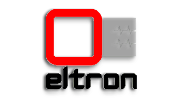Telescope protection
ETH-2 has 3 inputs for special sensors which are used by high priority telescope protection functions which are designed to prevent telescope malfunction due to its incorrect operation - one might think of them as the last line of defense against expensive hardware damage. These are:
-
Protection against leaning the telescope tube too close to the horizon, which can lead to primary mirror falling out of its calibrated position or even falling out of the telescope completely. Exceeding safe elevation angle zone is sensed equally well at any telescope azimuth by a dedicated telescope tilt sensor which is described in details in one of the “freeware” articles. Activation of this sensor promptly stops telescope motion and causes ETH-2 to beep and display “Tilt up” blinking message.
-
Protection against tearing the telescope cables. Because telescopes nowadays are packed with electronic equipment, and because by their nature they have to move around a lot, a common problem for the operators is preventing tearing of long dangling cables. ETH-2 has a digital input to which one or more traction force sensors can be attached. Such sensors are mounted along cables and measure mechanical traction forces applied to them during telescope motion. Should any of them detect force higher than the preset limit value, ETH-2 activates its “Stop telescope” output that hinders immediately the telescope motion system. Simultaneously, the device beeps and blinking message “Stop Cbl” is displayed on its display.
-
Protection against direct sunlight reaching the telescope. Only special types of telescopes are permitted to image the Sun directly, while most of them would sustain permanent damage if dome door is left open during the daylight time with telescope positioned unfavorably so that sunlight falls onto its optical surfaces. Anyone who has ever played with the magnifying glass as a kid knows how powerful and destructive sun rays can be, and that mental picture should be elevated several orders of magnitude when considering havoc that optically perfect mirrors several meters wide are able to wreak - dome of at least one very famous telescope is known to be criss-crossed by suspicious black tracks :) In order to prevent this type of accidents, we added the third protection sensor input to ETH-2. The sensor itself is a simple photo transistor that activates when strong IR or visible light falls onto it. In that case, ETH-2 does not stop the telescope motion system, but instead blinks “Sun Sun” message on its display and beeps loudly urging the oparator to close the dome door or move the telescope into the shadow.
Since activation of any of the three protection sensors presents the last hope of saving the valuable equipment from permanent damage, one needs to be sure that they will be able to alarm ETH-2 in case of emergency. That is the reason that we designed all of them to conduct when inactive and to stop conducting when activated - otherwise breaks in their cables could render them silent without warning. But because of this decision, breaks in protection sensor cables are guaranteed to activate ETH-2 protection functions and disrupt scientific work. In order to enable telescope operators to continue its use even when one or several protection functions are permanently activated, a simple software procedure for disabling any of the three of them is provided. This can be done both locally by pressing the keyboard keys and remotely, using the dedicated PC application.
ETH-2 protection output is low power type (100mA / 27VDCmax) that is optically insulated from the device itself. In order to enable it to control the telescope motion system, it is necessary to design the interface hardware appropriate for each particular telescope type and model. In the simplest case, that can be an electromagnetic relay with a few additional components that disrupt telescope motion system power supply when ETH-2 protection output activates. But more able designers should feel free to implement any sophisticated protection algorithm that suits their needs better - for example, ASCOM compatible PC application software provided can be used to initiate automatic telescope recovery routine.
If telescope stopping is implemented by restricting its motion system power supply, then in order to start the telescope and move it into a safe position, it is necessary to temporarily override the protection. In order to avoid complicating interface hardware with this further, ETH-2 has a dedicated momentary push button on its housing, the exclusive purpose of which is resetting the telescope protection output. While this button is depressed, blinking message "Restart" is displayed and alarm tone is generated by ETH-2. Reset function can as well be issued remotely either from the PC application software or via the remote console.
